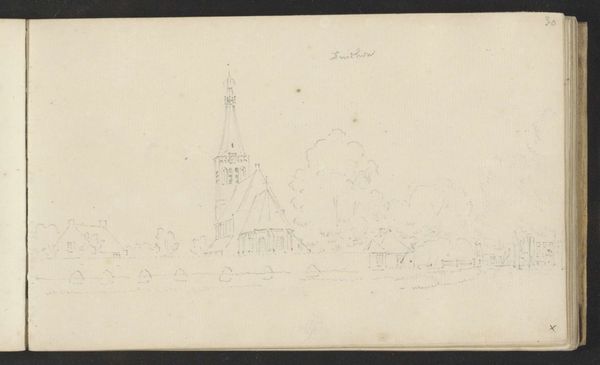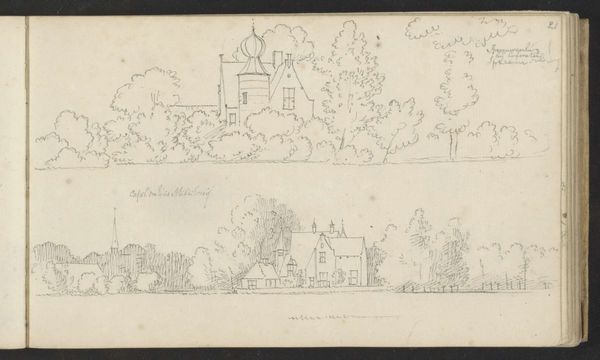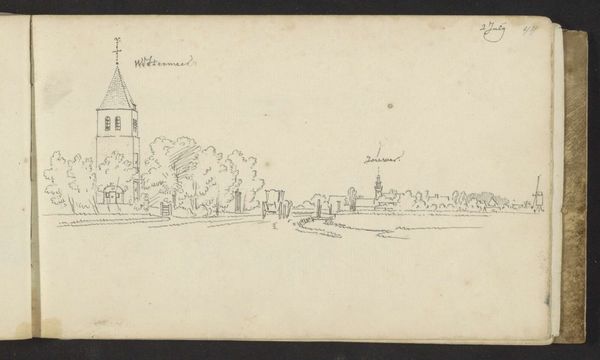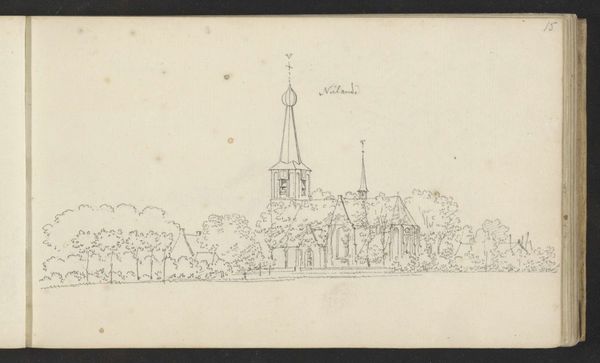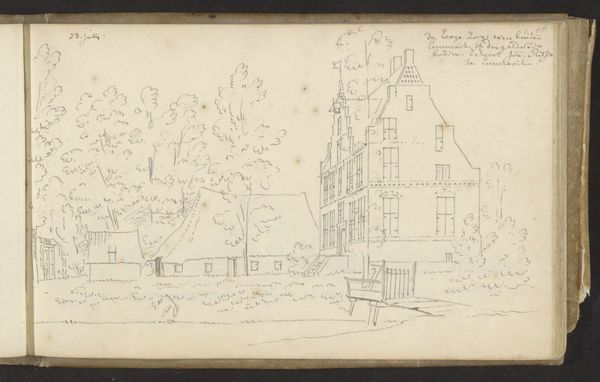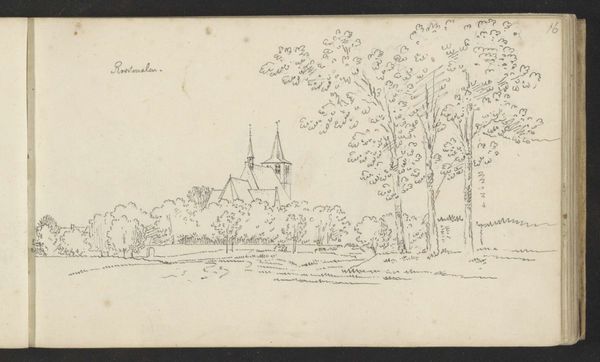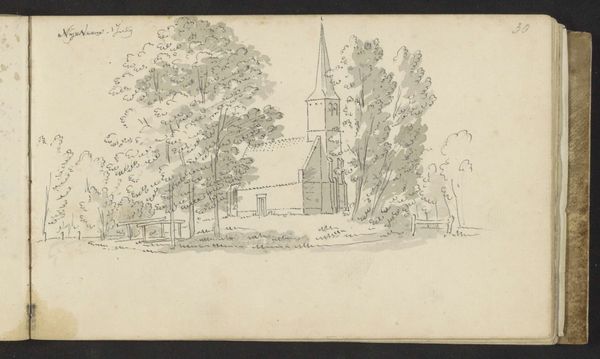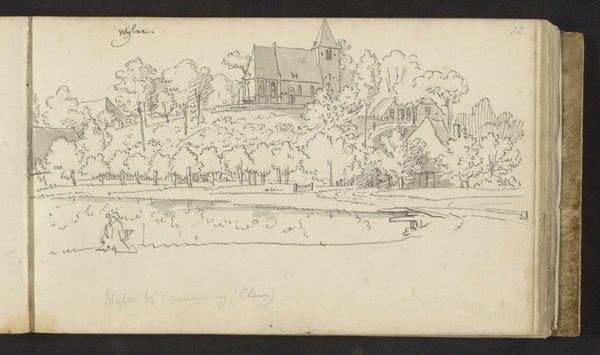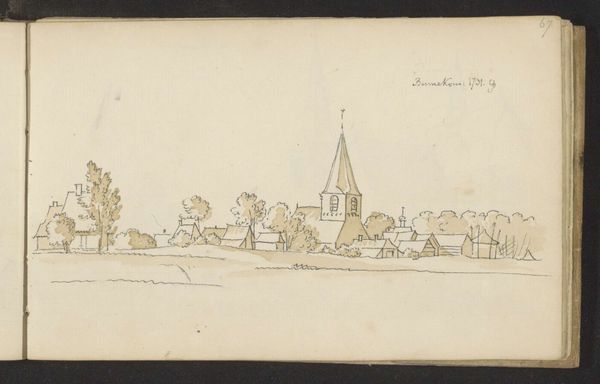
drawing, paper, pencil
#
drawing
#
pen sketch
#
sketch book
#
hand drawn type
#
landscape
#
paper
#
personal sketchbook
#
sketchwork
#
pen-ink sketch
#
pencil
#
pen work
#
sketchbook drawing
#
genre-painting
#
storyboard and sketchbook work
#
sketchbook art
Copyright: Rijks Museum: Open Domain
Cornelis Pronk made this drawing of Gezicht op Heeswijk in the Netherlands sometime in the first half of the 18th century. It's a simple sketch in pen that depicts a rural scene with a church in the background. The sketch captures a quiet, orderly world that reflects the values of the Dutch Golden Age. This era, known for its economic prosperity and cultural achievements, had passed its peak but its influence was still present. The church, a dominant feature, signifies the importance of religion in daily life. Landscapes like these served not just as records but as affirmations of Dutch identity, emphasizing the harmony between people and nature. Understanding this work means delving into Dutch social history, its religious norms, and artistic traditions. What did the rise of secular institutions mean to the power of the Church? The role of the art historian is to connect the artwork to these broader cultural trends and institutional contexts.
Comments
No comments
Be the first to comment and join the conversation on the ultimate creative platform.
